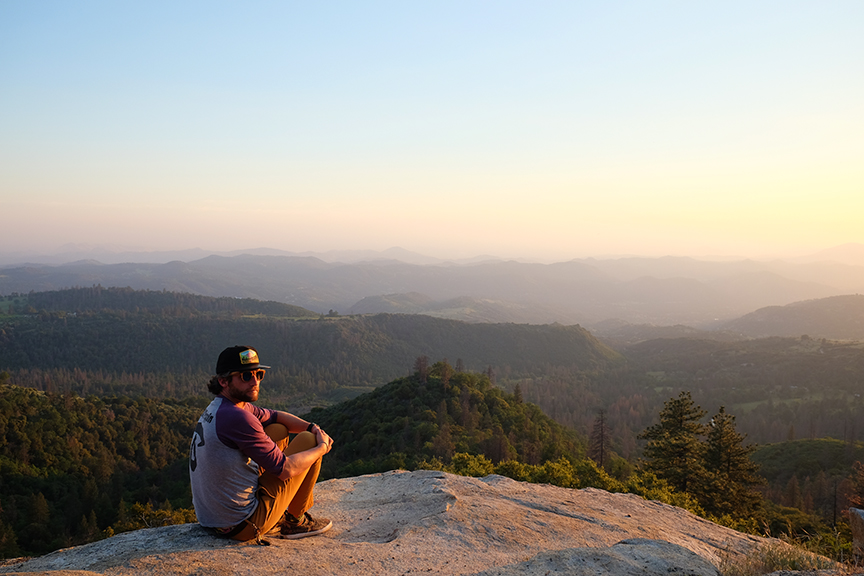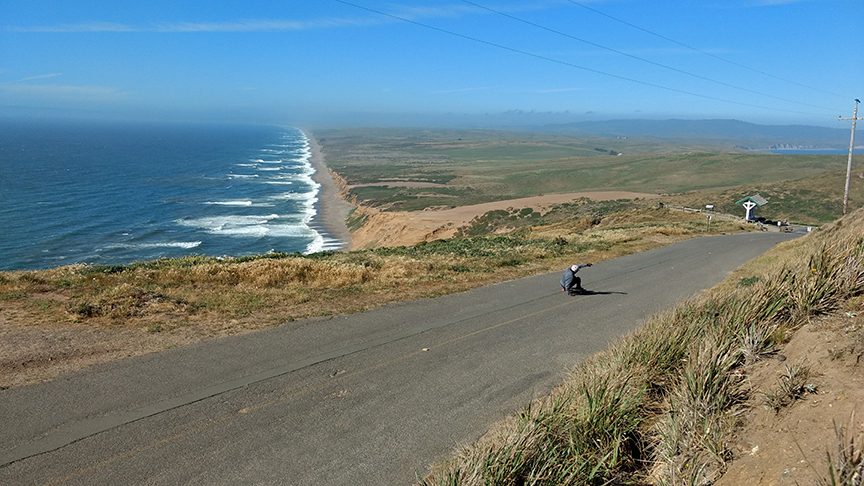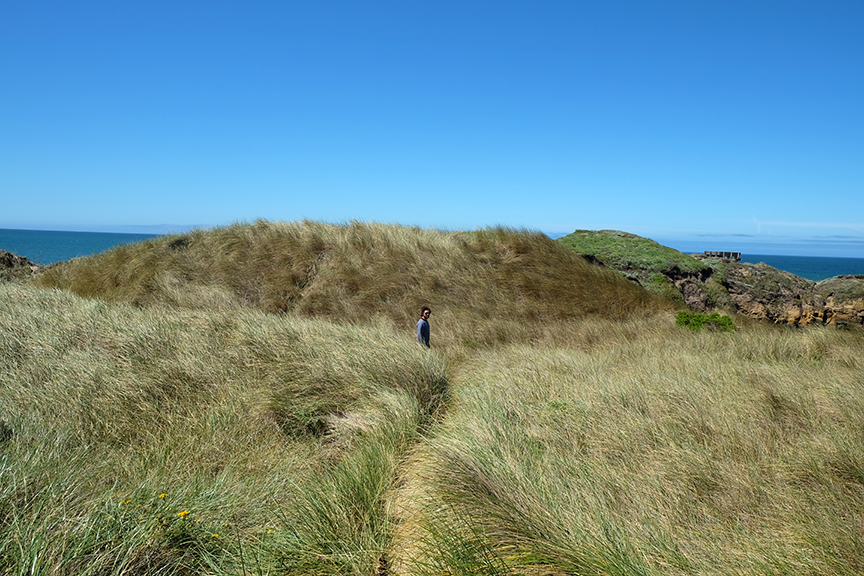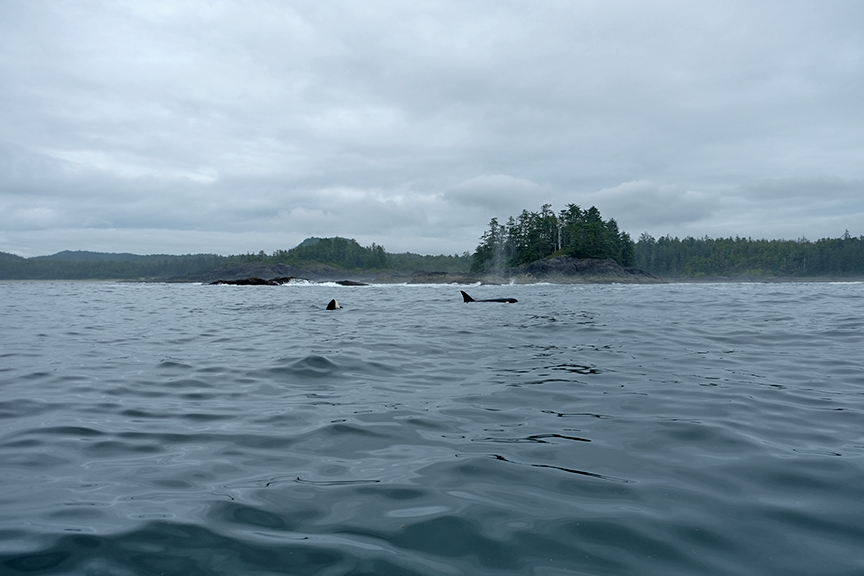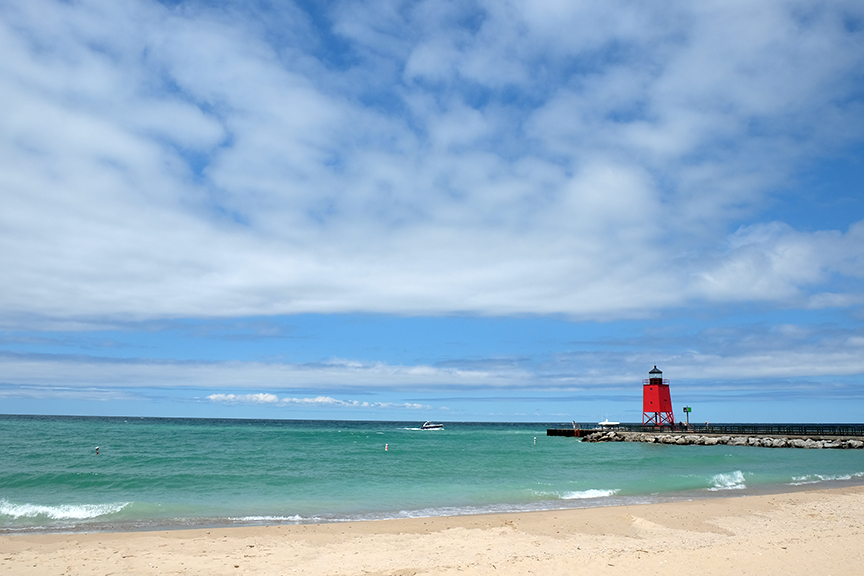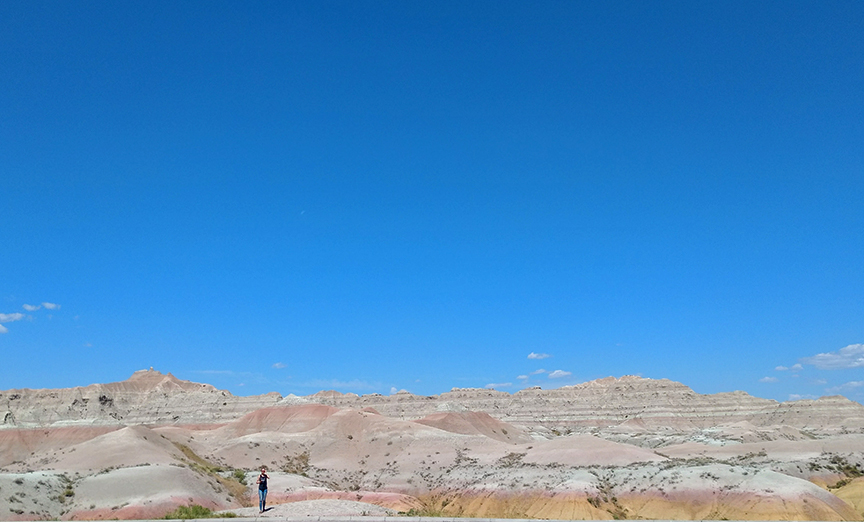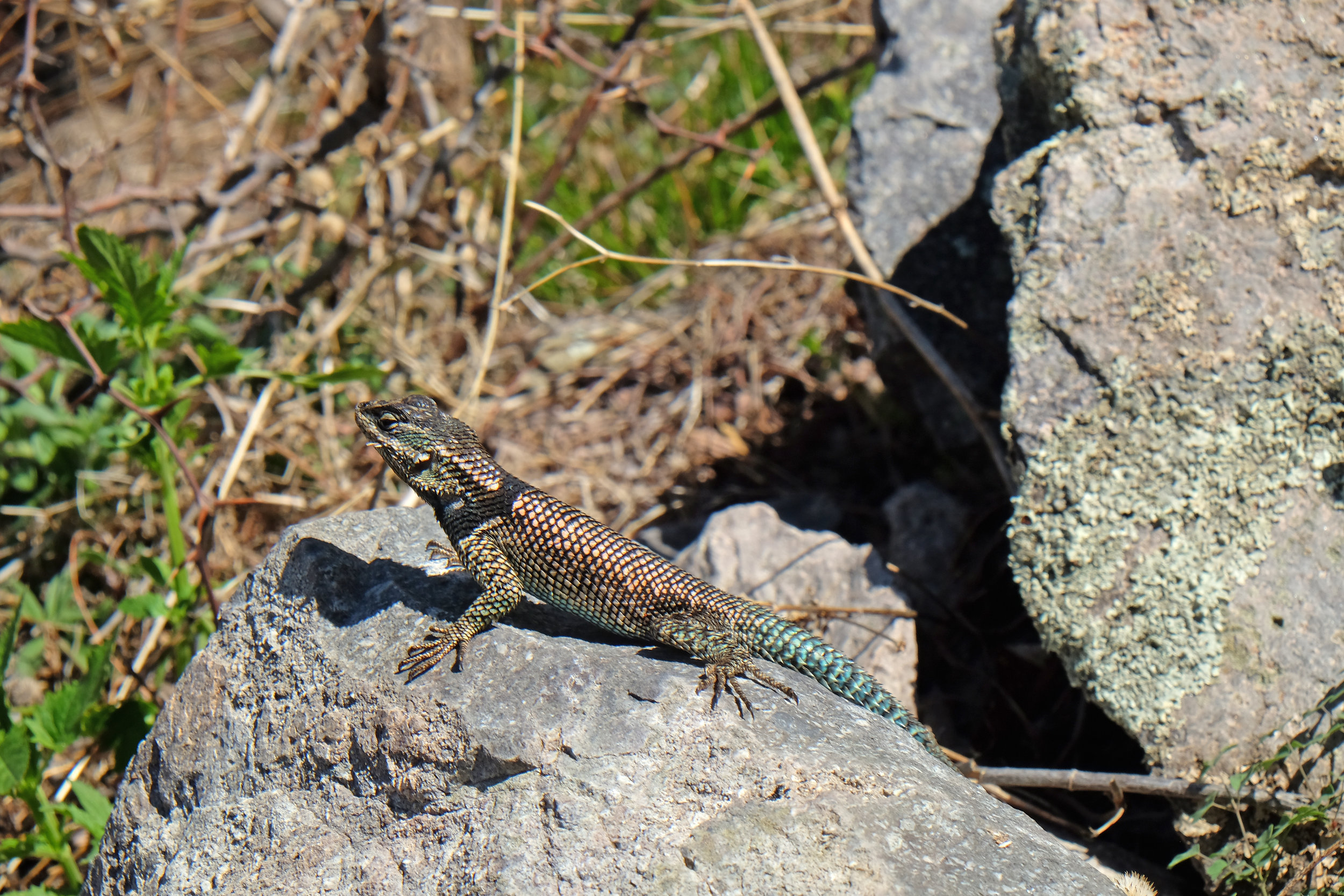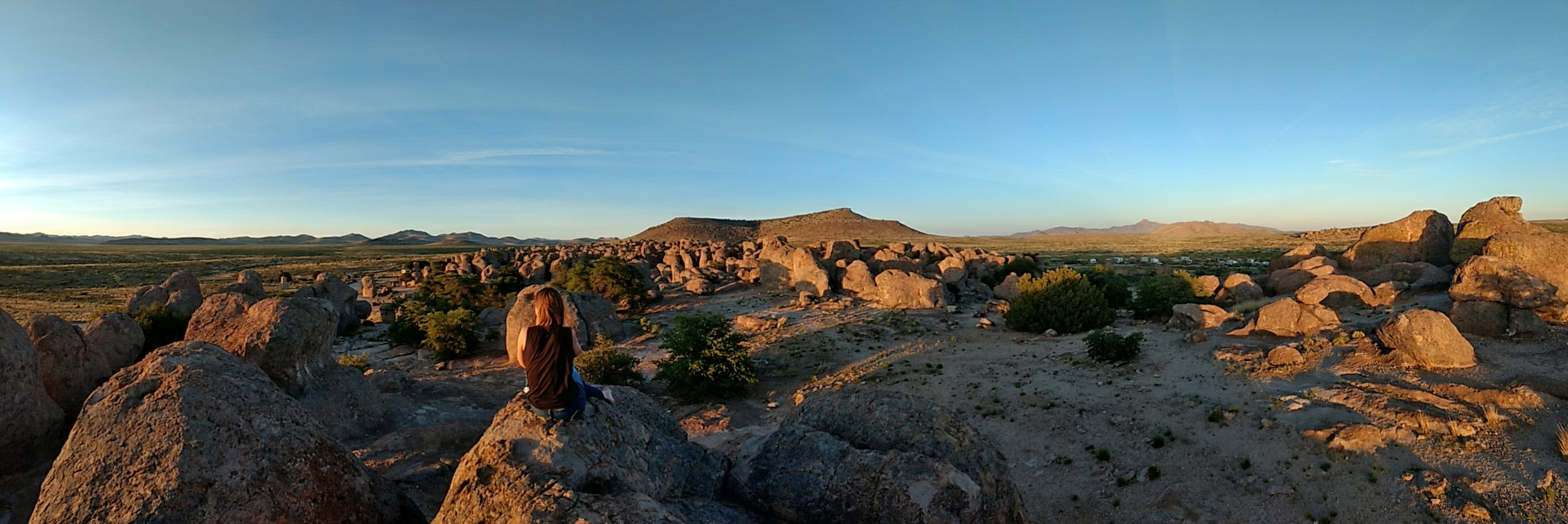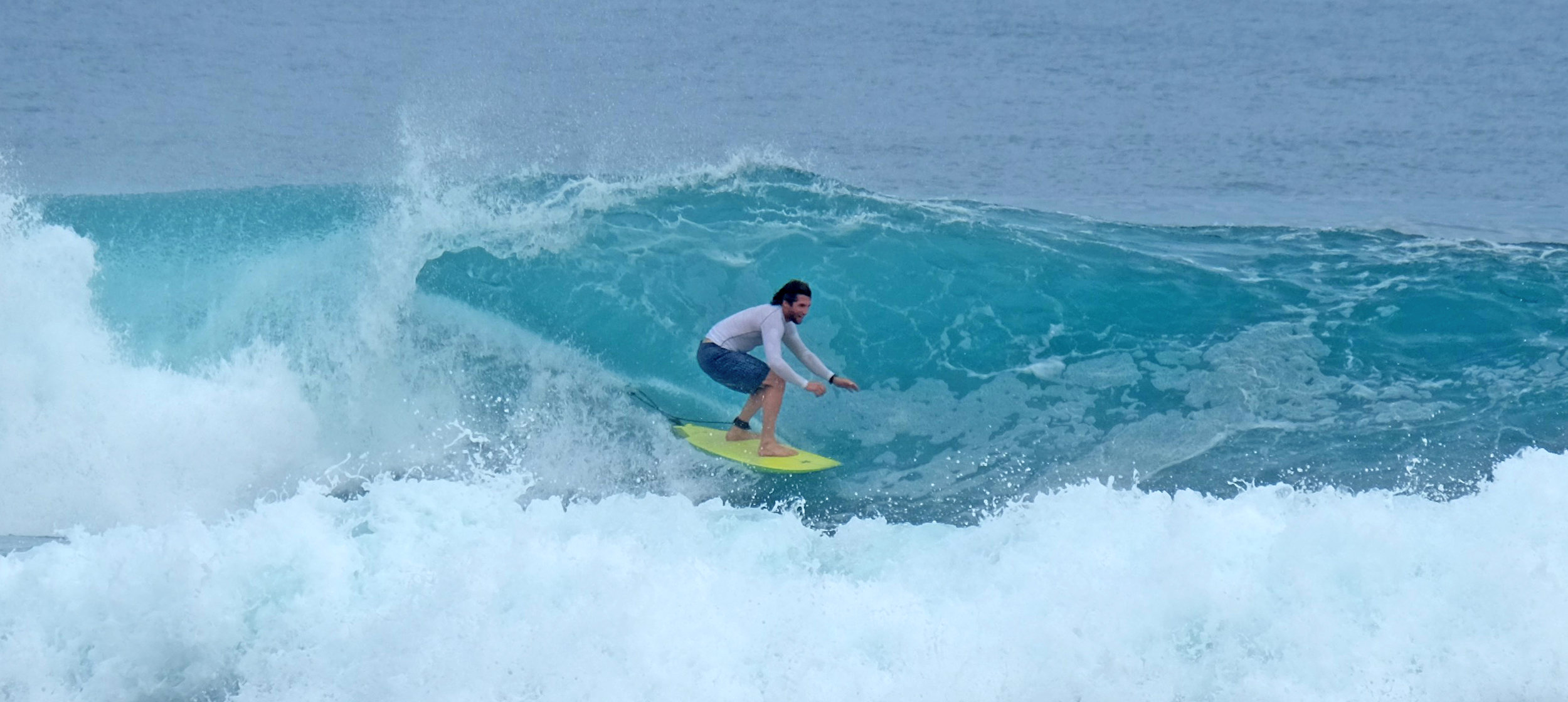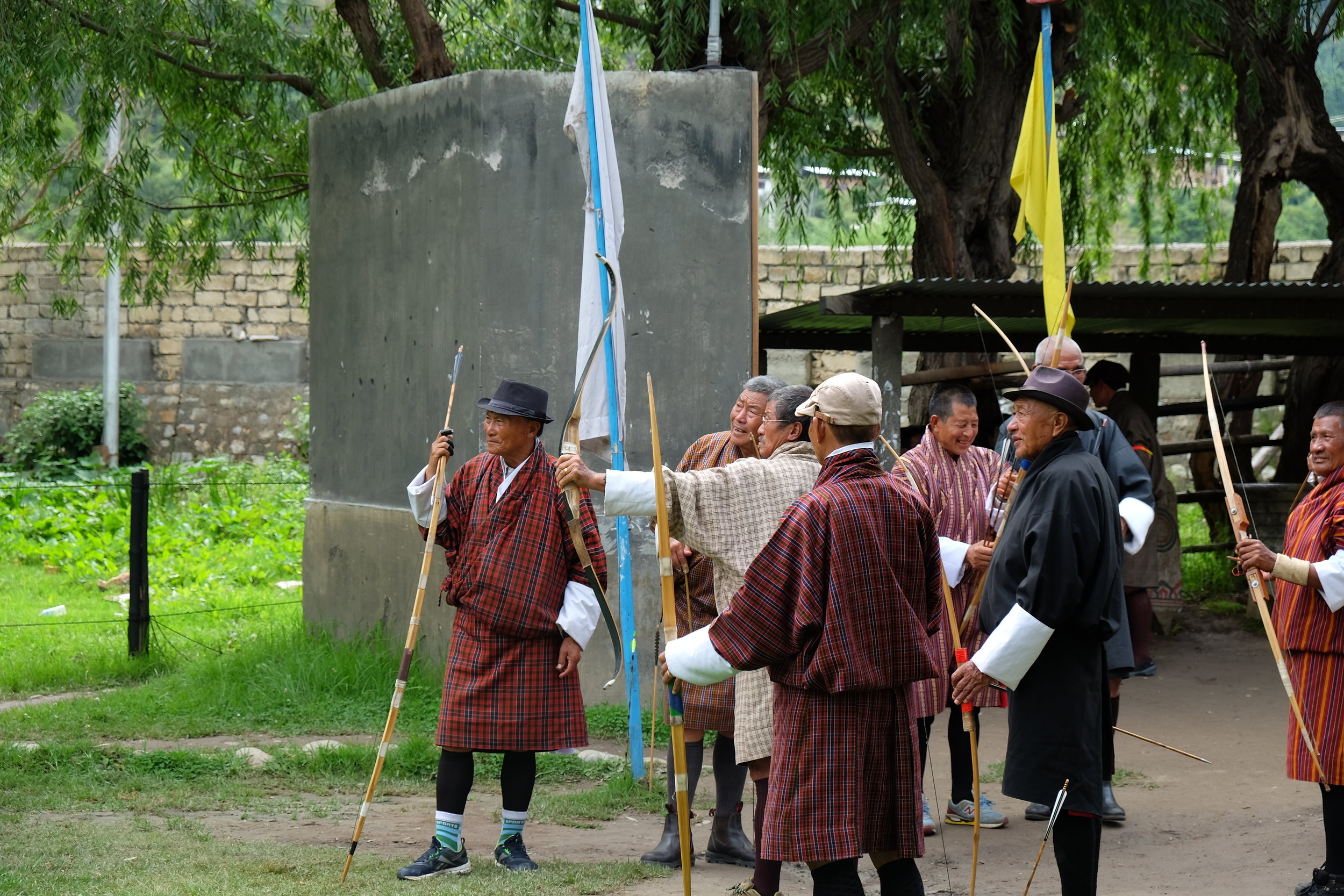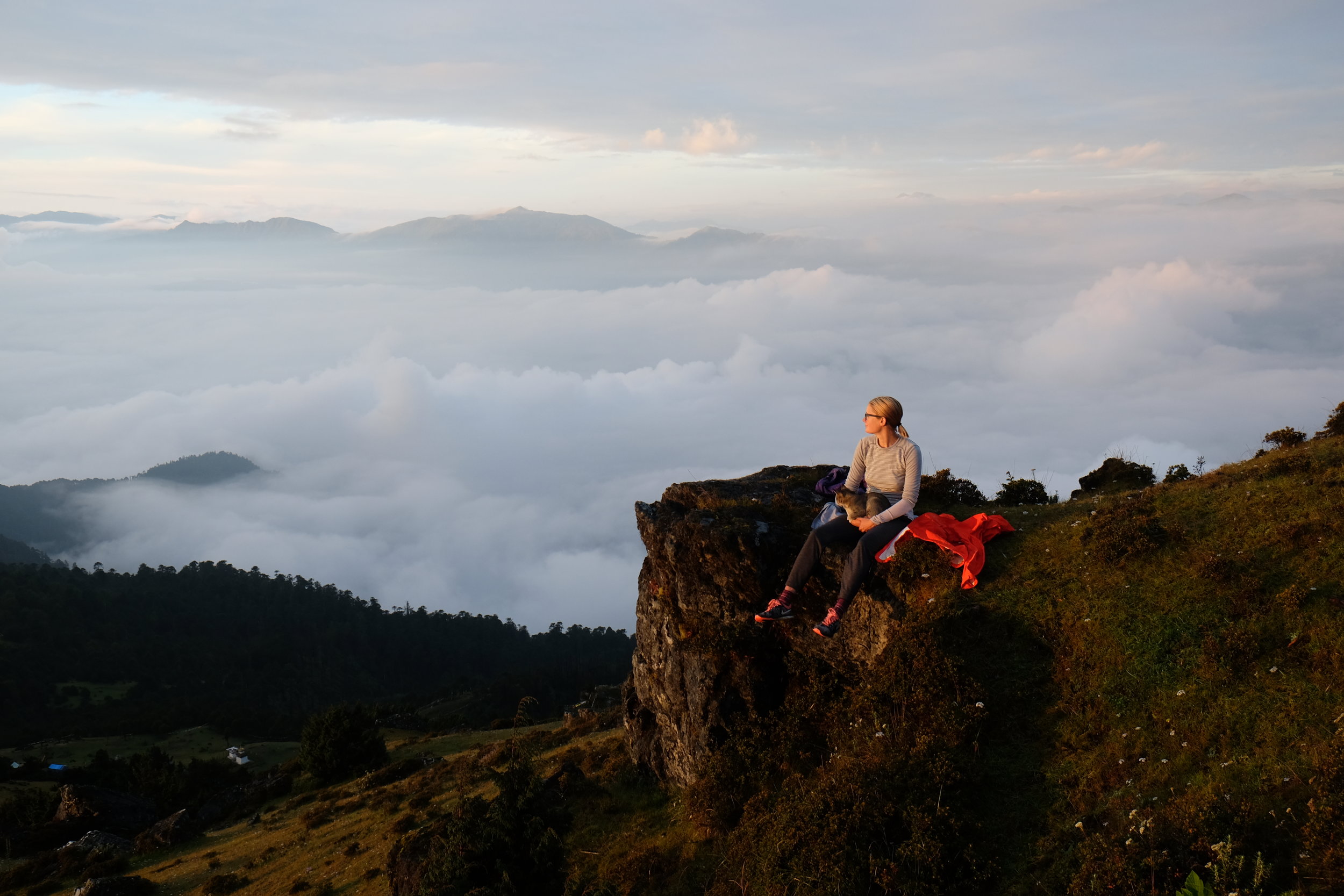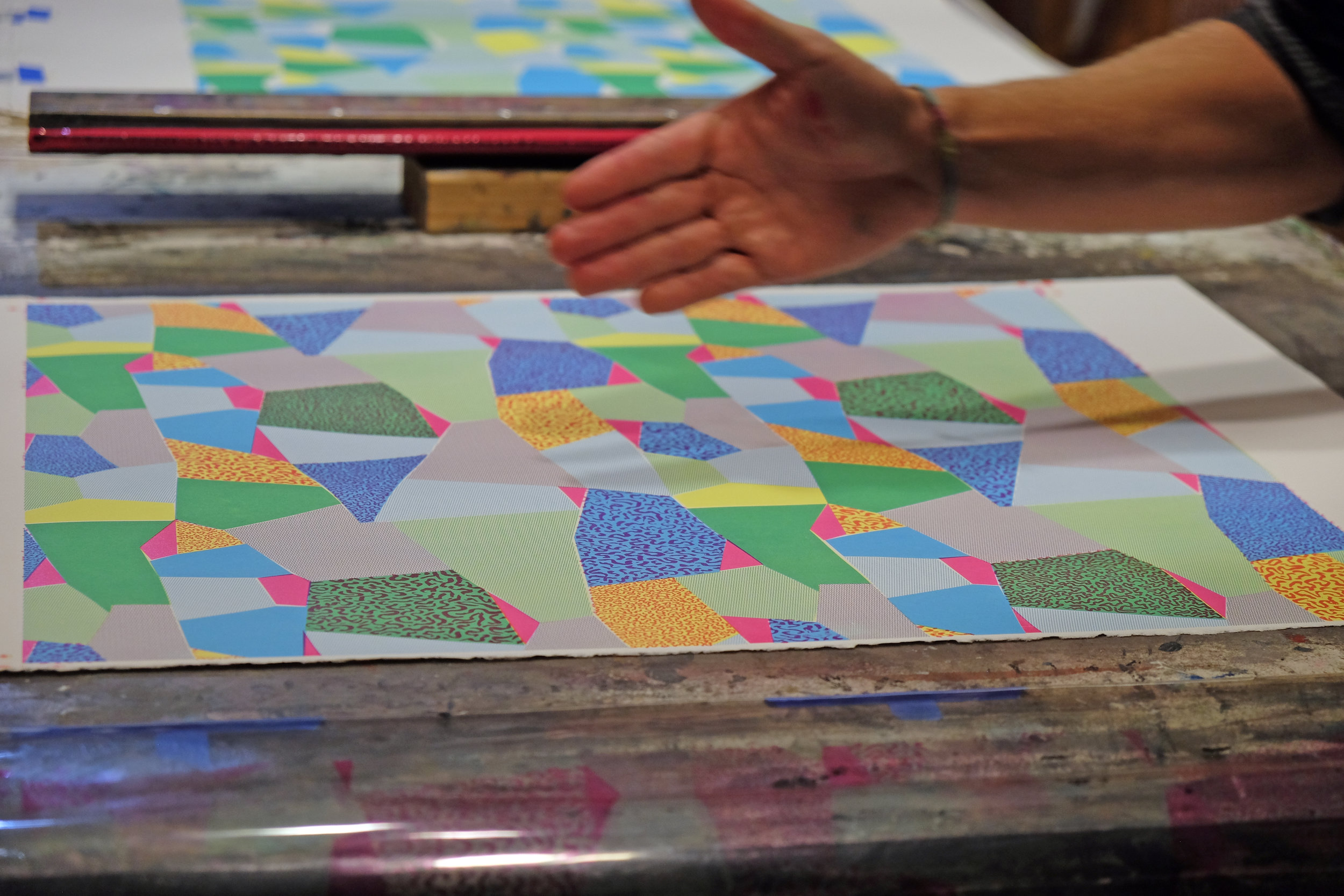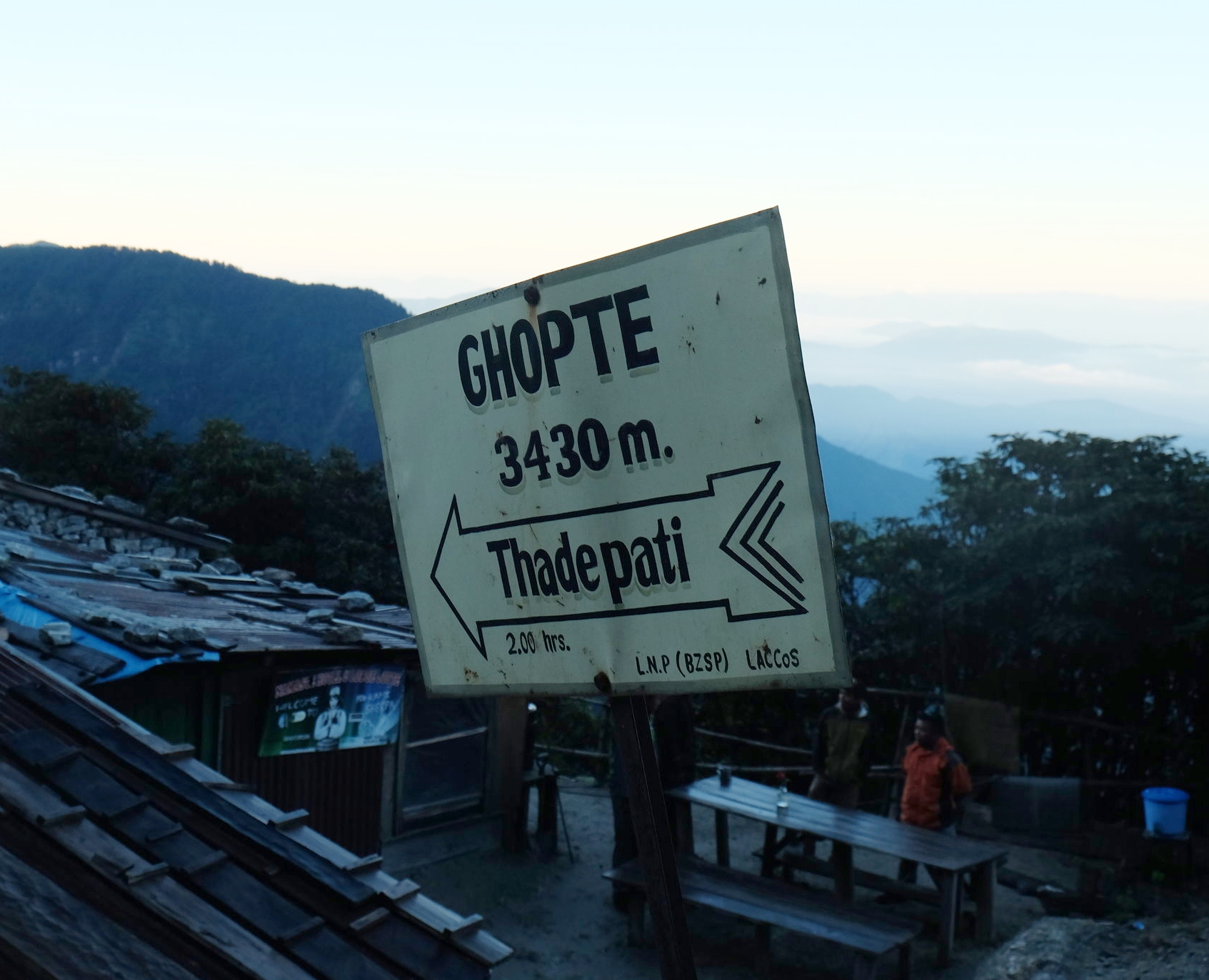Posted by Kaspar (currently in Vienna) covering September 30th - October 10th in Nepal
An example of the significant changes Kathmandu had undergone since I was last there. The lower right of this picture is filled with houses as of October 2017. In 1998 it was all rice fields.
INTRO TO NEPAL
Twenty years ago (in 1998) I went to Nepal for the first time. The idea to go there was predicated on the notion that if where I was born (New York) and where I grew up (Oregon) were so drastically and refreshingly different, then if I went to Nepal (halfway around the world) my mind should be blown by how differently people lived their lives. It worked only too well indelibly imprinting the landscapes, people, language and customs of Nepal in my mind. During our relationship Ali would hear stories of impossibly remote and beautiful mountains, harrowing situations and of the supreme humanity that much of the world seems to have forgotten. "This one time in Nepal" was like my mantra to Ali. Sometimes when I tell those stories even I would wonder if I dreamed it all. Did I dream it all? Would I remember how to speak Nepali? Would anyone I had known there remember me? Would Ali finally debunk all the stories I had told her? What would surprise us was not what I had forgotten, but how much had changed from what I remembered.
Renovated Boudhanath Stupa
Our first step was to go back to my old stomping grounds around the Boudhanath Stupa and to try and find the Nepali family that I had lived with so many years ago. We rented a motorbike and began retracing many old paths. Boudhanath Stupa had cracked in 2015 during the earthquake and judging from the makeover it looks better than before. The usual chaos of shops around the stupa is only more chaotic now and the price they try and charge tourists to enter the area is five times higher. I taught Ali about how to find the secret entrance where there is no money collector posted. We were circumambulating and spinning prayer wheels in no time. We even found the old thangka shop where I used to go and paint, everything seemed how I remembered it, we were off to a good start.
From Boudha the most prominent feature in the landscape is the Kopan Monastery up on the hill. This monastery looks down upon the neighborhood where my family's house had been, so I thought it would help us in finding it. This is where I started to feel crazy. On the motorbike drive up to the monastery already I could sense we were not in the Kathmandu I remembered anymore. Where there had been fields there were houses and not the single story brick houses I remembered but two, three and four story houses built out of concrete. It was new houses as far as the eye could see and impossible to find the house in this mess. Its not like there are road signs and addresses and google maps becomes almost useless, but what you can depend on in Nepal is that the same families would still be living there so we needed to hit the road and start asking around. We wove through streets on the edge of familiarity. Returning to the monastery hill I noticed a spine in the landscape we had not explored before, so we went back out. I had a good feeling, but the house had always been set back from the road and now it seemed that new houses had probably sprouted up in front. I had finally given up, we were driving back down the hill and I saw the corner of a brick house that I recognized. I pulled over to ask a woman there if she knew the family, she said she did and they were back up the road we had just come down. I was so excited we jumped back on the bike, when I looked over at a group of four guys and one looked familiar. My brother Raghunath had been living in the Middle East at the time when I lived in Nepal, but I recognized him immediately from photographs. He must have been freaked out by me running up with sunglasses and a big motorbike helmet on, but once I explained who I was and that I couldn't find the house he jumped on his bike and led us there.
Baa, Abhishek, Kaspar and Raghunath
Usha, Raghu, Baa, Ama, Kaspar, Abhishek, Nirmala
It was quite a surprise when we showed up. They were in the process of building two large houses one for Abhishek's family and one for Raghunath's family. The original brick home's second floor had been damaged in the earthquake and the old concrete house had been destroyed in the earthquake. We would stay for dinner and return several times during our stay to check in with them.
Ali would get teased for how she ate and ama would ask why she didn't eat more, "does she have a small stomach?" (saano pet?). I would get teased for having forgotten so much Nepali. My sister in law showed Ali around the garden and they prepared food together. My brothers and I had chiyaa as one does in Nepal. We felt fortunate to have found them. We would go on to visit Patan, Bhaktapur and other sites around the Kathmandu valley, but it was important to reestablish this connection before going on our first trek to Gosaikund.
GOSAIKUNDA TREK
"This is the hardest thing I have ever done,"
Ali said on the third day into the trek. The Gosaikunda trek is not known as an extreme trek but we were doing a special version of it and repeating the way I had done it back in 2001. Back then I was coming off a 20day trek to Makalu and only brought my flipflops, now seventeen years later it was a bit of a different story in terms of fitness and the loads we were carrying. Gosaikunda is a holy lake that is said to have been created by Shiva who, after imbibing poison to save the world by holding it in his throat with the help of his wife Parvati, needed to wash away the toxin with the purest water possible, so he struck the mountains with his trident creating Gosaikunda.
October 3rd: What always fascinated me about this route is that you leave right from Kathmandu. You literally walk from the city all the way to the Himalayas of Langtang. Most people who do this trek start in Langtang and hike the more downhill way to Kathmandu (if by most people you mean foreigners). Many Nepali people do it in the direction we were going (from the city to the mountains), but even they do not usually start in Kathmandu, they would rather take a bus and circumvent the first few sections. Beginning from Boudhanath we walked for about two hours along the streets to the Sundarijal water treatment plant. I know it doesn't sound very beautiful but this is where the Bagmati's steep descent ends as it enters the valley and there are water falls along the whole section. Sundarijal literally means beautiful water so families come here dressed in their finest to get out of the city and take selfies during Dashain. We were the bideshis (foreigners) loaded with heavy packs sweating and hiking up the steep stairs into the Shivapuri National Park. At this point the heat and humidity start to hit you as you climb out of the trees and the upward trajectory seems to never end. The reward is when you get to look back over Kathmandu sprawling below.
We only made it to Mul Kharka (a small town on the hillside) where there was one house offering lodging. Times had certainly changed. There was now a road crisscrossing the trail. The house had a flat screen and satelitte TV so people were glued to a WWF match. I asked in Nepali if they understood any of the dialogue and they said no, but they loved it nonetheless, in fact maybe just watching the drama and not understanding the dialogue added to the allure.
View from Mul Kharka looking back onto the outskirts of Kathmandu
Oct 4th: It was straight up from 1,855m (6,086ft) to 2,472m (8,110ft) to the pass at Borlang Bhanjang. The beautiful old stone step path continued crisscrossing the newer road, which I could sense was already being used less judging by the growth coming up from between and around the rocks. At the top we did a dance to celebrate and then cruised down into Chisapani which had been hit hard by the earthquake. Some houses were completely canted over. After a quick lunch we continued down into Pati Bhanyang. I didn't realize how much of the trail had been replaced by road at this point and we made a very beautiful but exhausting detour up a large ridge. After about and hour i was able to ask someone who turned us back although we got lost a second time and assaulted by a bull that got between Ali and I (long story that Ali likes to tell) further delaying us. The two hour delay meant we would not make our goal of getting to Chipling and so spent the night in a lodge with a wonderful Tamang woman and some men from Kathmandu that arrived by the aforementioned bus. They were nice guys and offered us some of their special Newari "gundruck" (pickled and dried spinach) to season our food.
Beautiful 2hr detour, oops.
October 5th: Stuffed with apple momos we left at 8am the next morning. The climb to Chipling was steep and relentless (more so than I remembered). This is when Ali shared how difficult it was for her and I did not disagree that it was brutal. After reaching Chisapani (which was about 200m higher than where we left from) we went another 600ms up (over 2,500ft total). We saw our Nepali friends again who had left earlier than us and were a bit surprised to see us catching them. From here we dropped all that elevation down to Gul Bhanyang 2,130m (6,990ft) where we both had tea for only 20rupiyah (20cents) and I had to force the lodgekeeper to take that even. From here we just went right back up again to 2,500ms (8,202ft) after taking another fruitless detour to try and find a monastery. Ultimately we arrived in Khutumsang and stopped at the first lodge we saw because it was about to downpour.
I negotiated down to half price of 500rupiyah ($5) for the room. It was Dasain after all and no one was around, even his cook was away. There was a guide for a German group who would help the lodgekeeper to get the cooking done and the funny thing is that we would meet this same guide again weeks later in a very different place, but the very same situation. We stayed warm by the stove and played cards with the Nepali group and then watched "First They Killed My Father" on the ipad in preparation for going to Cambodia. This was a very different experience than back in 2001!
October 6th: Knowing that we had an excruciating 762m (2,560ft) climb up to 3,252m (10,670ft) for our lunch break in Mangengoth we left at 7am and shortly thereafter had to pay the $66 entrance fee to Langtang National Park. This was difficult for me, because when I was last in Nepal they often didn't collect these fees, there were no fees or the fees were reasonable. In America you can get a year long family national parks pass for $80, between the Shivapuri pass and the Langtang pass we had already spent more than $80. I absolutely think that paying National Park fees is important and even paying higher fees as foreigners is totally acceptable, but the fees have become inordinately high and even prohibitive.
In Mangengoth we once again caught up to our Nepali buddies who were hiking in the same direction and we treated ourselves to garlic noodle soup. From there it looked like a simple elevation gain of less than 400m (1,300ft) to (3600m (11,800ft) to Thadepati, but for some reason it stretched on and on. We passed a group of foreigners that was having a hard time going down the perfectly maintained stone steps, complaining and warning us that there were 500 steps ahead (he had counted) so we could better imagine how much it would hurt to go up. I stopped their guide as one does on the trail to ask how he was doing and where they were going. He said he they were going to Mangengoth in a way that implied that he hoped they would make it there at the rate they were going and that he was utterly sick of this group.
A man passed us at a fork in the path on the way down (again all the non Nepali people we came across were going the opposite direction) and asked in a Bavarian style German, "weg runter?" while pointing his hiking pole. I responded in the affirmative using German and gave him further instructions. He walked a couple of steps and then turned around to basically say, "that's amazing I don't speak any English, I'm so lucky you understood me," and continued down the trail. When we finally arrived in Thadepati it had taken twice as long as expected and there had been an intense rain squall so we were not entirely dry. As we ate our snacks and prepared for the final push to Gopte a group of three younger Nepali guys came out of the nearby tea hut and chatted us up. They were going the same direction, but their style of travel was a bit more casual and they were taking their time. A fourth kid came out of the hut with a head of dreadlocks and steam punk looking sunglasses with baggy clothes like a rasta / samurai / sadhu and pronounced himself to be "Future Star" while pledging his allegiance to ganja and producing several stalks of buds wrapped in newsprint insisting that we take some of his, "gifts of the earth" with us. We declined the nice offer as we still had hiking to do and we were already dangerously tired, besides we could sense that we would see them again later.
Two hours later we arrived in Gopte which was quickly filling up with people coming down from Gosaikunda. I got the "speaks Nepali" discount even though it was the last room. Our older Nepali friends were forced to sleep out in tents and got soaked. Future Star and his crew pushed on to a hut beyond Gopte and stayed dry but got super cold that night. In the crowded area around the hearth we ate our hearty daal bhat and I spoke with many of the other guides, making room and squeezing in together on the periphery letting the larger groups of foreigners enjoy the proximity to the stove.
Beginning the climb from Khutumsang to Mangengoth
October 7th: This was the big day. From Gopte at 3,430m (11253ft) to Lauribina Pass at 4,630m (15,190ft) would be the biggest single elevation gain of about 1200m (3,937ft). By this time though we were feeling strong and our preparation would make the hike go more smoothly than the previous three days. The first stop before the real vertical was Phedi. From Gopte you can see it almost immediately but it hides behind so many veils of side hills, ravines and waterfalls that you feel as if the closer it looks the farther away you are getting. When we arrived Piyush, Anuz (Future Star), Basa and Sabim were already there. They went ahead as we enjoyed an apple, some snacks and a tea for the grind ahead. After 45minutes we lumbered on, the clouds closed in and we were buried in soupy fog. We met some people along the trail who had found a camera bag and were undecided as to whether they should bring it down with them or send it up as they had no idea who had left it. We were pretty sure it belonged to our friends with their heads in the clouds up ahead so we agreed to bring it to them. When we caught up to them they were in the middle of deciding who would go back down to get the camera, so we jokingly offered to sell them our newly acquired camera for 20,000rs. We shared some water as Anuz was getting pretty dehydrated, then we passed the older group of Nepali men who did not seem to pleased that we kept passing them, but we were giddy on lack of oxygen and kept progressing upwards.
Three and half hours later the clouds cleared and we were at Laurabina Pass looking down on Surya Kund. We dipped our feet in, I did finally smoke a little with our friends in celebration and we took in the beauty. After our well earned hour of contemplation it was only a one hour descent to Gosaikunda where we got a room at the Lakeside Hotel. Everyone went outside to witness the cinematic sunset before dinner and another Nepali group staying at our lodge sang songs late into the night making a game out of always singing new songs with no repetition. I can't think of another place where people love singing so much that they could manage such a feat of memory.
Quick break in Phedi before going up to Laurabinia Pass
Surya Kund at the top of Laurabinia Pass 4,630m (15,190ft)
Sunset over Gosaikunda
October 8th: It was a restless night of sleep. The plan had been to stay in Gosaikunda another night and do a day hike but the elevation at 4,380m (14,300ft) was starting to affect us to the extent that a cleansing bath in the frigid waters was only good enough to cleanse my sins and provide a sharp wake up call. We went for a short walk while finalizing our decision to head down to Laurabiniyak that night. Gosaikunda hangs on the side of the mountain against all odds, defying gravity and yet we were succumbing to the desire to descend ourselves if it would give us a chance at a better nights rest. We left at 11am and after only one hour we were in Laurakiniyak. It was hard to leave, but we were promised amazing views of Langtang the next morning.
Although we had reserved a place at a hotel we met the owner of the Hotel Morning View who was so nice and offered us free lodging, her lodge was empty and the one we were going to was probably occupied anyway so we decided to stay there. She made my favorite boiled potatoes with a very simple khursaniko achaar of spicy pepper, garlic and salt. You peel the boiled potato, mash it into the achaar and then just be careful that you don't eat too much. We spent the rest of the day socked in by fog enjoying the cooking, reading and playing cards. Ali learned how to make a bracelet (for her nephew Jack) and I drew a picture of a red fox for the kids. That night was one of our worst as we were both feeling sick and the altitude was still affecting us. At three am and again at five am while I was hacking up phlegm I stood outside looking at the mountains in the twilight when I was reminded of how only in Nepal could I be so mentally exhilarated while simultaneously being physically miserable.
Cleansing of body and sins in Gosaikunda
A finished sketch that was started in Bhutan
The road down to Laurabiniyak from Gosaikunda
The view from Hotel Morning View in Laurabiniyak
October 9th: Like a college student after a one night stand it felt like the climax was behind us and now it was time to flee the scene. The fog had receded and the himalayas were in full view. We said our goodbyes and flew down in about five hours all the way to Dunche about 2,000meters (6,561ft). The last time I did this descent I had an abscess on my foot from the thong on my flip flop, so it was a bit better than that. The main difference is that trekking has become a cool thing to do among the middle class Nepali youth, so there was a steady stream of hip Nepali kids in distinctly inappropriate hiking gear like skinny jeans and full makeup climbing up to Gosaikunda. It is good to see that these resources are being used and cherished by Nepali people which will hopefully ensure its proper management for years to come. Unfortunately the bus we planned to catch at 2:30pm was not running that day so we booked into a hotel, got some dinner and passed out.
October 10th: Our bus was 500rs leaving at 7am and described as "deluxe" because it was not supposed to stop along the way. I knew what we were in for. I had done this before, but I did not know how much I should tell Ali. She would later go on to describe this ride to some Nepali people as a, "descent into hell" to which they replied, "just sounds like a bus ride to us."
We were told it would take 5-6 hours, it took 9. They said it would not stop. We were constantly picking up additional riders, musicians, snack sellers and anyone else who wanted to join the party. I was actually impressed with the updates since the last time I had done this ride. They had a flat screen TV, a stereo system and everyone got a plastic puke bag which they still ran out of and people still ended up puking on the side of the bus, but at least they were trying to be proactive about it. The other difference was that for whatever reason the road was even worse before (maybe from the earthquake) bigger washouts, huge ruts, large rocks in the road and crumbling stream beds lined with slick mud. The bus shook so violently it was hard to stay in your seat and we rarely went over 15mph, that is how a 30mi. trip can take 9hrs. Of course there was the 1hr we were stopped due to a bus that was lying on its side.
When we finally arrived in Kathmandu we quickly got a cab to our next lodging where we met our 2 very positive and thoughtful hosts that were doctors and practitioners of Vipasana meditation and philosophy. There was no time to recover from the bus ride as we seamlessly transitioned into a conversation on doing away with religious dogma, focusing strictly on the understanding of consciousness, ego, desire and conflict in an effort to see beyond what you perceive as your "self." After a 10min. meditation we had dinner before continuing the wide ranging conversation late into the night. Thus ended our trip to Gosaikunda.

